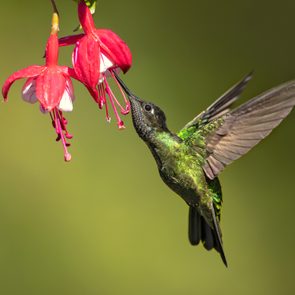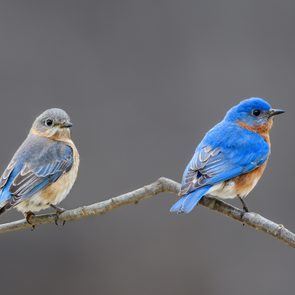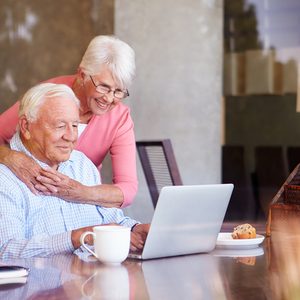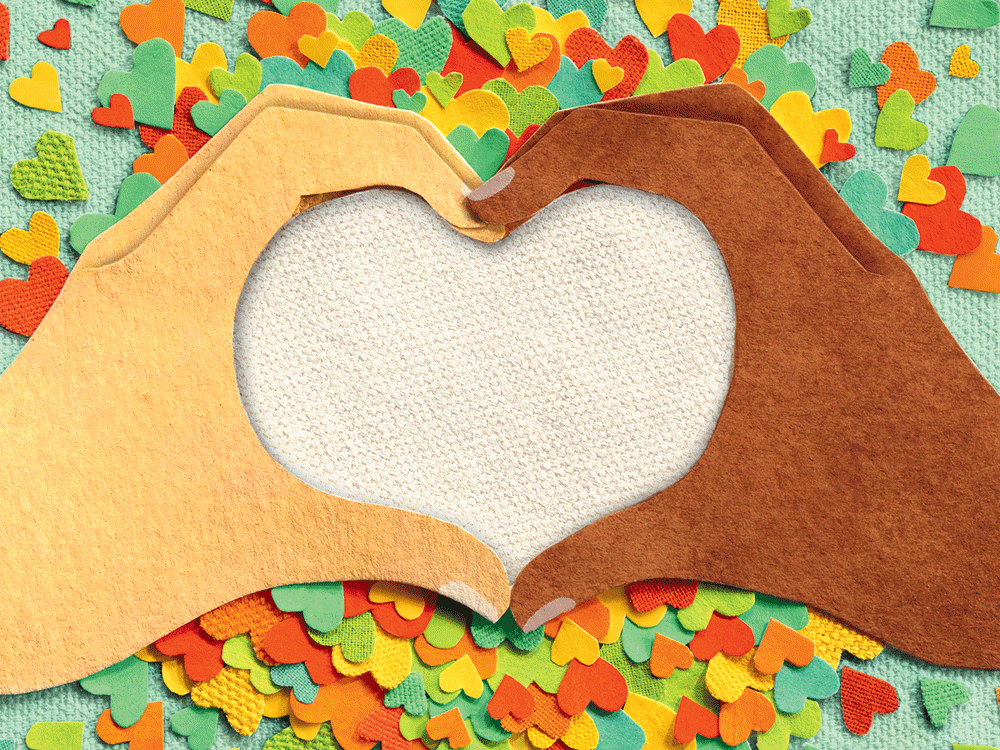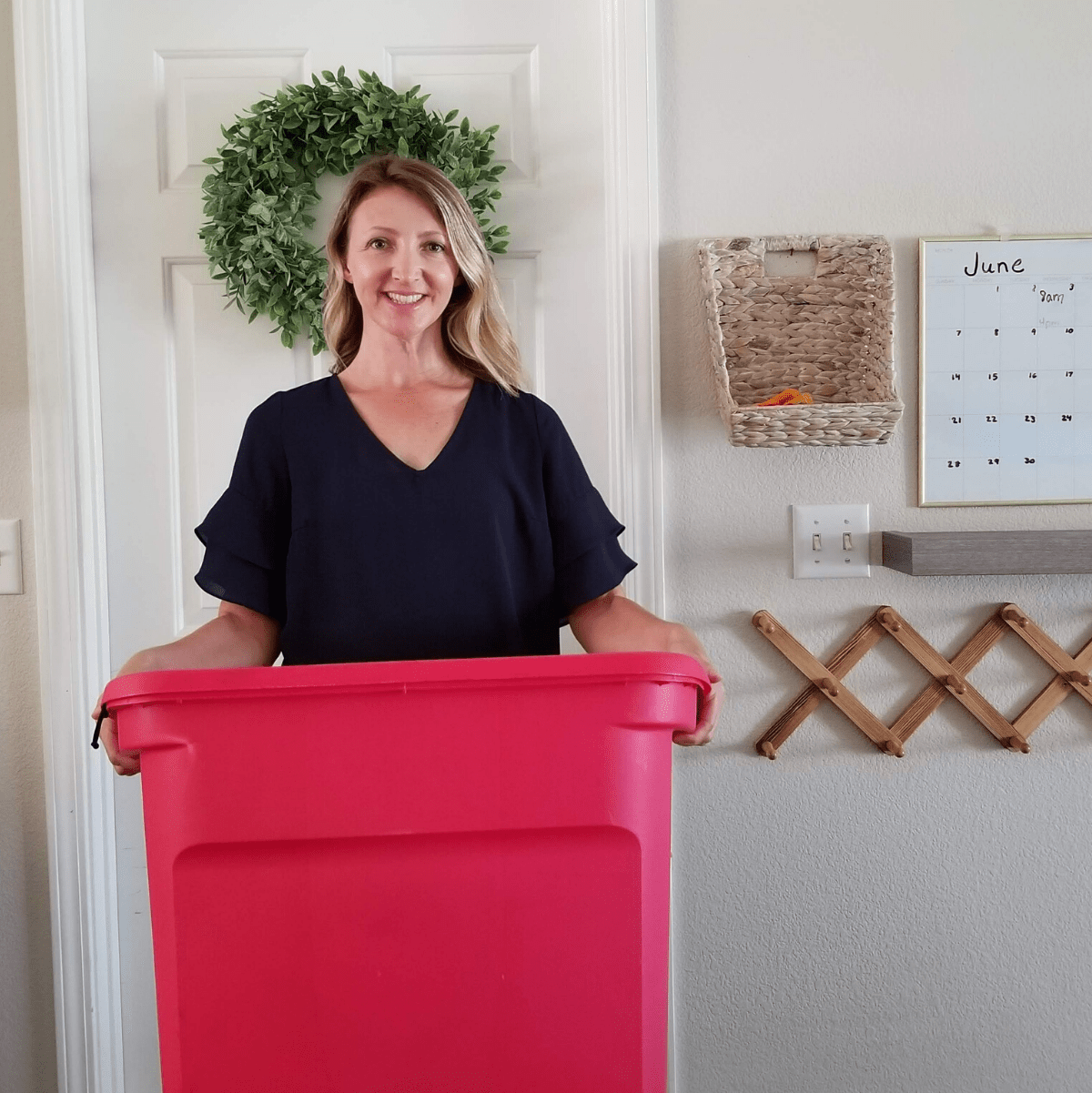
Dealing with sleepless nights
Every night was the same. No matter how tired I was at the end of the day, I would climb into bed, fall asleep, then wake up two hours later and spend the next four to six hours sleepless. My mom had insomnia when I was young that started in her 30s, so when sleep became scarce I just assumed the same was starting for me.
Feelings of depression and withdrawal
My insomnia began about six years ago, and it quickly started disrupting how I went about my day. Mentally, I felt like I was in a fog and I was constantly grouchy. In the evenings, I would arrive home from work and my children would ask if they could play in the backyard or go for a bike ride and I had to say no—I didn’t have the energy for anything but sitting on the couch. Nothing felt fun anymore, and as a result, I grew depressed and withdrawn.
I felt stuck in an inescapable cycle: I would climb into bed completely exhausted, but then I would start thinking about the dishes I should have washed, the laundry I should have done and the toys I should have tidied after work. All the things that I believed I was supposed to be doing with my free time cycled endlessly through my head, ratcheting up my stress levels. I’d fall into a fitful sleep for a few hours, but then the anxiety over my never-ending to-do list would wake me up and I’d spend the next few hours lying in bed or scrolling through Pinterest on my phone until the sun rose.
Seeking an insomnia cure
After about a year and a half, I knew I couldn’t continue living in such a constant state of anxiety and fatigue. I consulted a naturopathic doctor, who suggested I try taking melatonin before bed, but that didn’t help. I thought exercise might tire out my body and help me stay asleep, so I resolved to start walking in the evenings after work—but my overwhelming fatigue kept me from ever getting that habit off the ground.
Decluttering as therapy
One day, I was trying to tidy my son’s room, frustrated and overwhelmed as always by the clutter, so I decided to pull out and get rid of some of his baby clothes and toys. The clutter in my house was on par with the average mom, probably a 6.5 out of 10, and I thought getting rid of things the kids didn’t use might reduce some of the stress I felt when I went into their rooms to look for a jacket or a book and couldn’t find it. And it did! So much so, in fact, that I slowly started working my way into other rooms in the house when I had the energy, getting rid of things that we didn’t really need.
Improved mood and a better night’s sleep
Two or three months after I began getting rid of clutter, I felt like a burden had been lifted. My mood started to brighten and I was more willing to go for a bike ride with the kids after work or plan something to do on the weekend, like a day trip or a fun outing with friends. When I climbed into bed at night, my mind wasn’t racing and I wasn’t feeling stressed and overwhelmed about all the things I should have done—I was able to fully relax and decompress. My husband was actually the one to tell me that I wasn’t waking up anymore, and when I realized I was sleeping through the night I was amazed.
I decluttered my home about four years ago, bringing it down to a three out of 10, and I sleep better now than I ever have. While I was dealing with insomnia, all I wanted to do was rest. But now, without the stress of clutter weighing me down, I feel like I’ve found myself again. I even started a blog, Simply Well Balanced, where I help other stressed and overwhelmed moms find peace and happiness through decluttering. The best part: I sleep eight to 10 hours every single night.
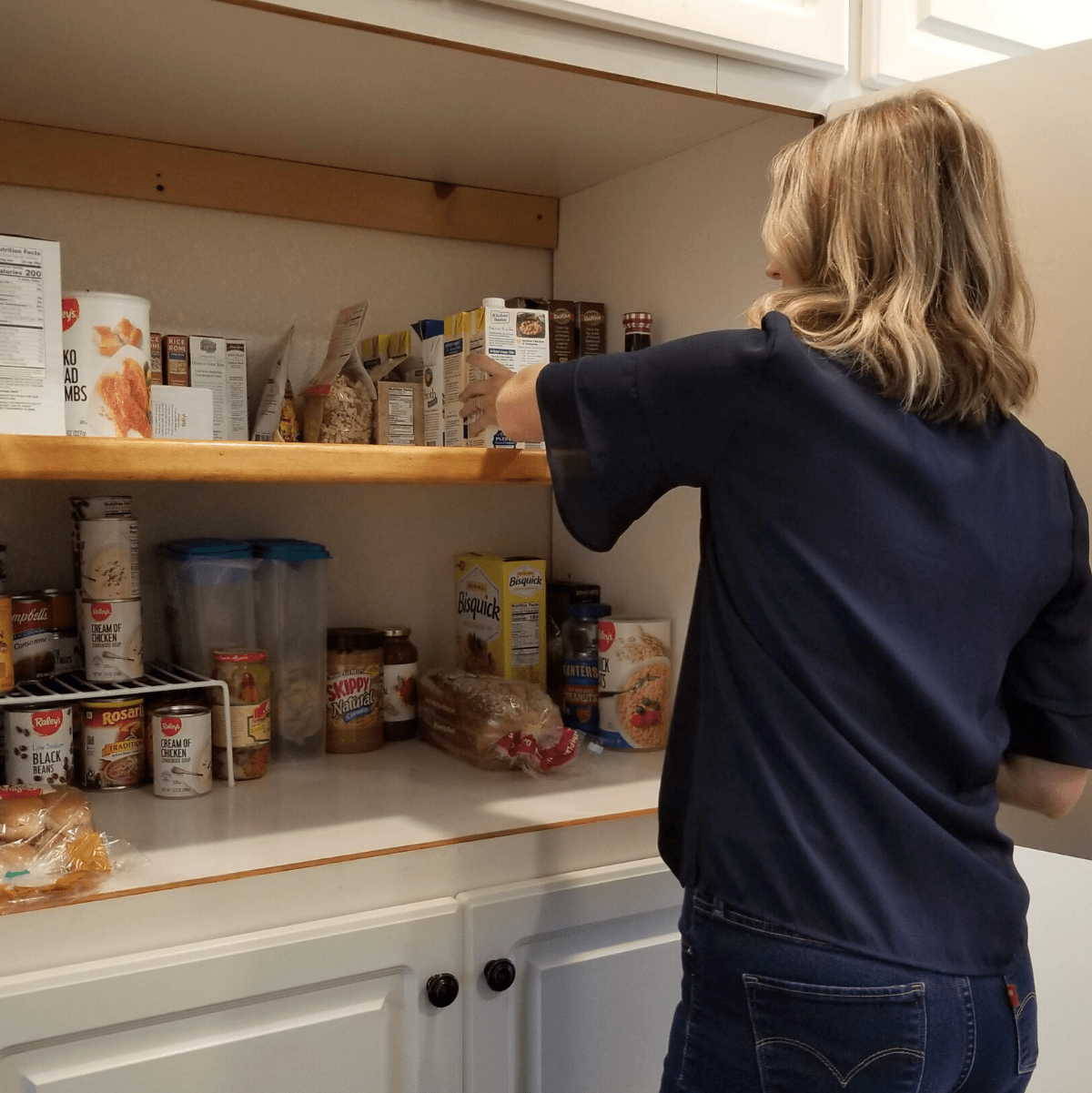
How decluttering helps insomnia: A word from our experts
“Science has shown a direct correlation between clutter and sleep deprivation,” says psychologist and sleep specialist Whitney Roban, PhD, founder of Solve Our Sleep, who recommends decluttering to clients who struggle with insomnia. “A disorganized room leads to a disorganized brain. The brain is subconsciously distracted by clutter, and when the brain is too active, it causes longer sleep latency (time to fall asleep) and more night wakings.”
Indeed, a 2015 study presented at the 29th annual meeting of the Associated Professional Sleep Societies, published in the journal Sleep, found that the more clutter participants had in their homes, the higher they scored on measures of sleep latency, sleep disturbances, and daytime disturbances. “When a room is full of clutter, it causes us to feel overwhelmed and anxious, as well as distracts our mind from relaxing thoughts,” explains Roban. “Both of these lead to poor sleep, which can cause decreased energy, motivation, productivity, attention, organization, and problem-solving ability the next day.”
The good news: Healthy sleep patterns can be quickly restored once you get rid of anxiety-inducing clutter. “When the mind is relaxed, the body can follow suit,” says Roban. “What comes next are long and peaceful nights of sleep.”
Tips to decluttering your home
If you want to start decluttering, professional organizer Barbara Reich, author of Secrets of an Organized Mom, recommends starting by grouping all your like things together. “This is the only way to know how much of something you have,” says Reich, who also suggests storing items in the room where they’ll be used (no more serving platters in the hall closet or sunscreen in the bathroom). Another smart first step is to get rid of anything broken or beyond repair. “An uncluttered physical space translates into a more energized and accomplished life,” she says.
These are the best sleeping positions for a good night’s rest.
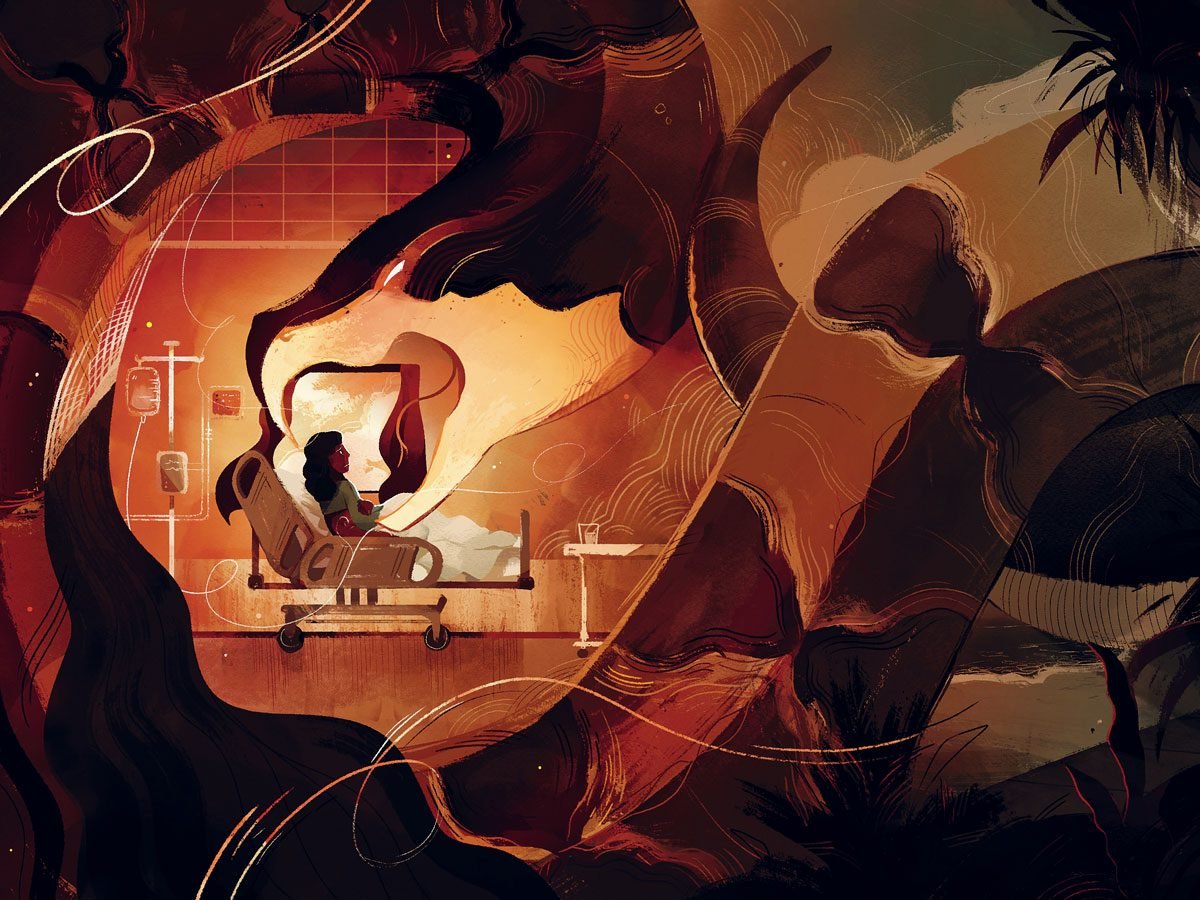
A dream vacation—and a dangerous snakebite
When Shalabha Kalliath arrived on Thailand’s Ko Phi Phi Don Island last spring, her plan was to sightsee, sunbathe and check out the island’s nightlife with her high school friend Santra Navas. The 26-year-old Kalliath lived in Waterloo, Ont., where she was completing her master of applied science degree at the University of Waterloo, while Navas was working as an assistant art director in Singapore. After four years apart, they were excited to catch up.
The Phi Phi Islands are known for their white sandy beaches, turquoise ocean and soaring limestone cliffs. At the end of the day, crowds flock to beachside bars and restaurants. That’s where Kalliath and Navas found themselves on their first night in Thailand, still wearing their swimsuits, cover-ups and flip-flops while watching one of the island’s famous fire shows. The pair looked on as young Thai men spun flaming staffs, ropes and balls of fire on chains, their choreographed motions set to pulsing dance music.
During an intermission, the pair opted to explore the beach. But as they stepped from the sand to the sidewalk, Kalliath felt a sharp pain in her right pinky toe. She lifted her leg and saw a skinny, half-metre-long brown snake dangling from her foot. She instinctively kicked, slamming the reptile against the wall of a nearby building. Seconds later, she was hit by excruciating pain. It started in her toe and swiftly moved to her ankle, calf, knee and, finally, her thigh.
“It was like hot lava travelling upward through my system,” she says.
Kalliath’s leg buckled and she fell to the ground. Navas and a passerby picked her up and carried her to Ko Phi Phi Don’s WorldMed Center, a medical office with a small walk-in clinic, while another passerby followed with the dead snake.
Within minutes of reaching the clinic, Kalliath’s leg started swelling and the pain became even worse. “We held on to each other’s hands, and I kept telling her that she would be okay,” Navas says, “but I was uncertain of my own words.”
Kalliath had been bitten by a Malayan pit viper. Found throughout Southeast Asia, these snakes typically grow to around 50 centimetres in length, though some can reach more than a metre. Malayan pit vipers are not considered aggressive, but they will bite if disturbed—and bites can be serious, leading to swelling, pain, skin discoloration, blistering, hemorrhaging and necrosis—the death of cells in tissues and organs. Severe necrosis can require limb amputation, and in cases of hemorrhaging or a bacterial infection, bites can even cause death.
At first, the clinic staff weren’t sure whether the viper had actually injected venom—roughly 25 per cent of pit viper bites are “dry.” But Kalliath’s leg was so swollen that her flip-flop no longer fit her foot. The staff administered pain medications, IV fluids, antibiotics and a tetanus vaccine. Then they performed a blood test to determine whether there was venom in her system. While they waited for the results, Kalliath and Navas called their respective fathers, who are both doctors. Kalliath’s father was half a day away by plane in Brunei, but her symptoms were progressing so quickly that they worried about him being unreachable for even that length of time. Both men offered advice over the phone.
Seven hours later, the results were in: Kalliath needed antivenin, and fast. Snake venom doesn’t stay at the site of a bite—it floods into surrounding tissues, where it can start to destroy cells and impact the blood’s ability to clot. The doctor told her that there was no guarantee she’d survive.
The terrifying news was made worse by the fact that Kalliath was extremely weak and fading in and out of consciousness. “I could hear everything, but I couldn’t respond with anything other than a yes or no,” she says.
Antivenins are made by injecting animals—usually horses and sheep, both of which have very strong immune systems—with snake venom so they can produce antibodies that neutralize its toxins. Then the blood is harvested, purified and concentrated into antivenin. Venom has different qualities depending on the species it comes from and even where that species lives, so every bite must be treated with a specific antidote. In Kalliath’s case, the clinic didn’t have the right type on hand. She had to be transferred to Phi Phi Island Hospital, a larger facility about 10 minutes away.
There, the hospital staff decided to run blood work again to confirm that Kalliath needed antivenin. The added delay intensified the women’s sense of helplessness. But antivenin can cause an anaphylactic reaction in the short term and an uncomfortable immune response known as serum sickness in the long term, so the attending doctors didn’t want to risk giving her a dose unless it was necessary.
When the second test confirmed she had venom in her system, the doctor administered the antivenin, then waited to see how Kalliath’s body reacted. If her blood started clotting normally, she wouldn’t need additional doses.
Unfortunately, her blood didn’t clot. And another problem had arisen: the doctor was concerned that the venom was causing tissue in Kalliath’s foot and leg to die, which could mean she would need an amputation.
The language barrier made the already tense situation more stressful. Neither woman spoke Thai, and the doctor struggled to communicate complicated medical information in English, saying they might need to “chop” her leg.
Ten hours after Kalliath’s first dose of antivenin, the doctor tried a second. This time, it worked—but not without side effects. Kalliath’s grip on reality began to disintegrate. As she slipped in and out of consciousness, she was unable to differentiate between dreams and reality. Kalliath would fall asleep mid-sentence, then wake up seconds later, feeling like she’d slept for hours. She was disoriented, scared and in constant pain.
But by the following morning—her third in Thailand—she was beginning to see small improvements. She was still in pain and her leg was very bruised, but she was alert. The doctor even allowed Navas to take her out of the hospital in a wheelchair so she could get some fresh air.
The day after that, she was able to move around on crutches, and her doctor decided she was out of danger. With just over 24 hours left of her trip, Kalliath was discharged.
Though her leg was still painful and swollen, she wanted to see as much of the island as she could. She slowly made her way around Ko Phi Phi Don on crutches with Navas, checking out restaurants, boutiques and even a beach party. “I couldn’t dance much, but we took it slow and still made an effort to dress up,” she says. The next morning, they even went on a boat ride and snorkelled. Kalliath was eager to try swimming with sharks, but Navas nixed that plan.
“After our ordeal with the snake bite,” Navas says, “I thought it was best not to interact with wildlife for some time.”
Later that day, the friends started their separate journeys home. Kalliath had to travel in shorts because her leg was still too swollen to fit into her pants, but otherwise her trip went smoothly. Her insurance company even upgraded her to first class, allowing her to keep her leg elevated during her flights. By the time she touched down in Canada, she figured the worst was over.

Six days after being bitten, Kalliath was back home in Waterloo. Initially, she’d planned to get some sleep and then call her family doctor. But after a nap and a shower, Kalliath realized her exhaustion hadn’t improved at all. Bruises began to bloom across her other leg and arms. She felt dizzy. Kalliath called two university friends, Bharat Venkitesh and Jerry Wilson, and asked them to get her to a doctor.
They first tried a nearby walk-in clinic but were quickly sent to Grand River Hospital, three kilometres away. They waited in the emergency room for several hours, chatting and trying to keep Kalliath awake. She was exhausted and fell asleep easily—sometimes in the middle of speaking with Venkitesh. Eventually, medical staff tested Kalliath’s blood to see how freely it could clot.
The results were so extreme that they were undetectable by the hospital’s machine. The medical staff ran the tests again. When the second test yielded the same results, they realized that the problem was Kalliath’s blood, which was taking a dangerously abnormal time to clot.
Dr. Russell Uppal, the ER doctor on duty that evening, usually sees patients with abdominal pain and injuries to the extremities. He’d never encountered a venomous snake bite.
He contacted the Ontario Poison Centre and consulted a toxicologist, who speculated Kalliath hadn’t received enough antivenin in Thailand, or that her body had experienced a delayed reaction to the snake’s venom.
Either way, she needed another dose. Finding one wouldn’t be easy. The closest option was at the Toronto Zoo, which had on hand an antivenin for Ontario’s only venomous snake, the Massasauga rattlesnake, also a venomous pit viper. The toxicologist hypothesized it was similar enough to the Malayan pit viper to be effective. The second option was a polyvalent antivenin, which was located at Indian River Reptile Zoo in Asphodel-Norwood, Ont., just east of Peterborough. It was more easily accessible, but the toxicologist wasn’t sure if it would be effective—no one had ever used it to treat a Malayan pit viper bite. The closest vials of Malayan pit viper antivenin were in the United States. The hospital put in requests at both of the Canadian locations. They also raced to obtain frozen plasma for Kalliath. Her blood’s ability to clot was so low that she was at risk of brain hemorrhage, bleeding from her body’s mucous membranes and organ failure. She’d need a transfusion if her health plummeted.
Lying in her hospital bed, Kalliath felt more tired than sick. “I could still talk—I was communicating, laughing,” she says. “I didn’t realize the seriousness of the situation.”
In fact, she felt so much better than she had in Thailand that she thought she must be recovering. But when Venkitesh asked if they could step out for a coffee, she quickly learned otherwise.
“The medical staff told me I shouldn’t walk,” she says. “If I bumped into something and fell, I could bleed out.”
In fact, she was so fragile that even minor ailments, like nausea or light-headedness, could cause serious damage. Even vomiting could cause a life-threatening internal tear or rupture.
Her organs were shutting down, a nurse explained, and she already had internal bleeding. “There’s a 50 per cent chance that you won’t survive the next six to 12 hours,” the nurse said, as the medical team moved her from the ER to the intensive care unit.
Kalliath was stunned. She wasn’t prepared to die.
Kalliath waited anxiously for one of the antivenin options to arrive. She was almost never alone while hospital staff closely monitored her for worsening local spread—increased pain, swelling, redness—and any signs of additional internal bleeding.
Two hours later, the antivenin finally arrived via car from the Toronto Zoo, accompanied by a police escort. After a small test dose to rule out serious allergic reactions, Kalliath received the full dose via IV. Then, more waiting, for a blood test that would indicate whether she was stabilizing.
The results came in: the antivenin was working. Doctors and nurses cheered and hugged one another, while Venkitesh ran to the only shop that was open in the hospital to buy chocolate for everyone.
Within days, Kalliath’s blood work had corrected, the internal bleeding had stopped, and her organs were returning to their normal functioning. It took a few weeks for the swelling in her bitten leg to relent and for Kalliath to get back on her feet. For a few months after being bitten, she’d still feel the tingling of pins and needles in her foot and lower leg.
A year later, she’s back to normal, living in Ottawa and working for an engineering consulting firm. Despite the ordeal, she doesn’t fault the snake. “At the end of the day,” she says, “we were the ones in its path.” But she vows to always buy travel insurance. And to always look where she walks.
Want more drama? Check out our collection of the most gripping survival stories.
In 1978 I brought home a blue budgie for my daughter, Elaine, for her birthday. Elaine called this blue bird Freddy because at this time we had a hired man called Fred who Elaine liked very much. As Freddy matured, we could see that she was female but so what, Freddy can be short for Fredericka.
Freddy proved to be a very lovable little pet, but she was also full of mischief. As I worked around the house, she would sit on my shoulder and talk to me with her budgie sounds, which I loved. I would always be sure to have my hearing aids in my ears so I could hear her better. Mind you, at times she could be quite noisy, squawking loudly when she was excited or angry. Then we wished she’d be quiet. When I’d lean over, Freddy would sometimes walk down my back and sit on my rear end! When I stood up, she would have a long, steep climb up my back to my shoulder again. Sometimes she would perch on my glasses or others’ heads!
Judy, another of my daughters, is afraid of birds and was one who didn’t appreciate Freddy. She would put on a hat when I let the bird out of its cage as she was afraid that Freddy would land on her head. Freddy knew Judy was afraid of her and would swoop right towards her and fly over her head!
My husband Lane couldn’t get over how much Freddy trusted us. If I didn’t want her on my shoulder any longer, I would take my hand and push her off. She would just fly around in a circle and land back on my shoulder. She never had any fear that I would hurt her.
When Elaine was home and practising the piano, Freddy often sat on her shoulder to keep her company. I’ve no doubt that she sang along with the piano, but I wouldn’t know as I couldn’t hear her without my hearing aids.
To me it was always interesting to watch Freddy preening herself. She would work her beak through her feathers. Budgies have an oil sack just above the tail. Once in a while she would rub her head in this oil sack as part of her preening. She would also scratch her neck with her foot and her foot would move so fast you could hardly see it! Watching her do all this had a relaxing effect on me.
Naughty Birdie!
Now for the mischief! There was much of this nearly every day. Her favourite was getting into my plants. With the large ones she loved sitting on the branches and sometimes would chew on the leaves. Then she loved to draw attention to herself and make a mess by digging in the pot, sending dirt flying all over! I thought I could remedy this by gathering stones from the crushed rock in the driveway and setting it on top of the dirt. Surely she couldn’t pick up stones to throw out? Well maybe not, but it didn’t stop her from using her handy little curved beak to push them to the edge of the pot and then right over the edge! One of the plants was in a planter over the kitchen sink. Imagine the racket made by these stones hitting the sink!
One night I was trying to relax in the living room by reading a book. Freddy decided I should be paying attention to her so she went to work on one of the plants hanging in the living room. As usual dirt went flying! I took a piece of cloth and pinned it around the plant. Freddy gave me a look that said, “You can’t fool me!” She climbed to the bottom of the cloth and went under it! Then I put another pin at the bottom of the cloth. I got another one of those looks and she climbed through a space in the cloth that wasn’t pinned. In went another pin! Company arrived, so Freddy gave up and finally went into her cage at which point I immediately shut and fastened the door!
Another time, I was making a stew for supper. After having simmered the meat, I was cutting potatoes and carrots into it. Freddy was sitting on my hand watching all this when she decided to jump into the pot! Fortunately for her and us, she landed on some vegetables that happened to be sitting on top of the stew so she wasn’t hurt.
Trying to do a jigsaw puzzle was quite a process with Freddy around. She delighted in picking up the pieces in her beak and running to the edge of the table to drop them on the floor. This also happened if you decided to play solitaire with a deck of cards. This was more difficult for her as she had to hold her head way up high to carry the card. Also she wasn’t able to see where she was going, so one time she got to the edge of the table before she realized it and started to fall. Of course, being a bird she could just up and fly away. She was rather surprised by it all though, and didn’t let go of the card until she was halfway to the window that she was heading for.
Still another time, I had left a saucer of butter sitting in the sun that had started to melt. I was sitting at the table reading when I heard this little thump! There was Freddy on the floor covered with melted butter! She must have tried to take a bath or something. I had quite a time getting the stuff off her, too.
Lost and Found
Then we come to the lake incident. Elaine along with her friend, Donna, and I were staying at a cottage at Kenosee Lake. The girls were there to take swimming lessons. Freddy came with us and sometimes I would let her out of the cage for a break. One evening, we decided to go for a drive. I opened the door to bring in some lawn chairs before leaving. Unfortunately, I forgot about Freddy. She flew onto my shoulder when I was in the doorway. Before I had a chance to back up and close the door, Freddy flew out and away! Oh, how upset we all were!
The next evening, Lane arrived to be confronted with four people in mourning! He told us to put a notice in the store. Being a tame bird someone might get hold of her. I didn’t hold out much hope for this but the next morning Nancy and her friend, Sheila, came down. They wrote a notice, and took it to the store. They found out that someone had caught a bird and took it to the Chalet. Nancy and Sheila went to the Chalet only to find out the person who caught the bird had taken it home. They found out where he was camping and went there. He wasn’t home but before they left, Nancy peeked in the window and saw a cardboard box on the table with holes punched in it and bread crumbs scattered on the table. Nancy said, “Yup, that’s Freddy!”
Somehow they found out that the owner of the camper was golfing, so they went to the golf course. This man spotted them, and asked, “Have you lost a budgie?” Then he told them he would bring the bird home when he finished golfing. How happy and excited we all were when we heard the news!
Later, when the gentleman arrived with Freddy, I took her out of the box and said, “Freddy, you bad girl, just what did you think you were doing?” I asked the man how he caught her as she doesn’t just let you grab her. He told us how he’d been golfing the morning after Freddy flew away. He saw these ladies with a blue bird and he went to investigate, wondering what kind of a bird it was. When he got to them he saw that it was a budgie. Having had one himself, he knew something about them. He managed to get Freddy on his finger but when he tried to grab her with his other hand, of course Freddy would just flit away. Then he got her on his finger again but this time he flipped his hat on her to catch her. This worked but he said, “Boy, she sure did a lot of swearing!”
We had Freddy for seven years before she took sick and died. Lane, who always acted like she was nothing but a nuisance, insisted she be put in a box and buried in a special place in the yard. It was raining cats and dogs but the girls went out, dug a spot under a branch of our old elm tree in the corner of the yard and buried her. Such a lovable, vibrant personality is missed by all of us, especially Elaine and me, but all the wonderful memories remain with us.
Check out more great Canadian bird stories.
I work at the Canadian International School (CIS) in Vietnam as Vice Principal of the elementary panel. Our school has been closed since January 27, when we ended a two-week holiday for the Lunar New Year (Tet in Vietnam). By then, COVID-19 had taken a hold on Wuhan, China and the Vietnamese government decided to close all schools in the country for a period of 14-days. As of today (April 1), Vietnam is under a new 15-day quarantine order; the borders are closed and so are the airports, for inbound flights.
On Saturday March 14, I boarded a plane (fully masked and gloved) destined for Toronto to seek medical attention for herniated discs in my cervical and lumbar spine. In Vietnam, neurosurgeons had deemed I needed very invasive surgeries to correct the spinal issues I was having. After hearing the diagnosis, I decided to return to Canada for a second opinion and to seek medical attention from my own doctor.
While in the air, the rules in Canada changed! Not only was I not going to be able to see my own doctor, there was no way any neurology specialist was going to see me either, and the MRI and X-rays I carried with me from Vietnam would remain in my suitcase unseen.
Canada was now beginning to shut down as well, almost eight weeks behind where we were in Vietnam.
When I landed in Vancouver, I was not asked any questions even though I had just arrived on a flight from southeast Asia— from Vietnam through Taipei (Taiwan) to Vancouver. I asked an airport worker in Vancouver if I could see a Health Canada official to explain my travel trajectory. The worker handed me a paper with the phone numbers of various provincial ministries of health and I was told to contact any of these numbers in the event that I felt flu-like symptoms.
I boarded my flight to Toronto then picked up my car and drove to my sister Donna’s home in Victoria Harbour. She had cooked and stocked the fridge and freezer with all my favourite foods, before she heading to a friend’s home, where she remained for the 14-days of self-isolation that I undertook.
In Victoria Harbour, I made contact with my spouse, Grant, to learn that while on a cross-Canada train the previous week for a vacation to Vancouver Island, his plans had to be aborted and he took a flight back to Toronto. This was the same night I was on my connecting flight to Toronto, but we were on different planes at different times. Grant had now begun to exhibit signs of COVID-19 infection. I should mention that once inside my car, I had taken off my mask and gloves for the first time—it turns out that Grant’s hands and breath had been all over the interior of our car just prior to me picking it up. I drove it for two hours not knowing anything about his diagnosis.
The good news is, after 14-days of self-isolation for both me in Victoria Harbour and Grant in Toronto, we are both COVID-19-free.
With regard to my back and my spinal issues, after communicating with my doctor and describing my symptoms, it was deemed that I didn’t need the invasive surgeries suggested by the neurosurgeon in Vietnam. In my doctor’s opinion, I required chiropractic and physiotherapeutic treatment rather than invasive surgery.
While writing this article, I have been reunited with Donna, who moved back into her house with me at the conclusion of my self-isolation. I have begun some new medication and exercises to correct my posture and to strengthen my back and spine. The plan is to return to my life and work in Ho Chi Minh City as soon as it is feasible.
I am grateful to the medical practitioners I interacted with here in Ontario from the time I arrived at my sister’s place. They helped relieve the sense of dread and anguish that I felt after having flown for more than 30 hours at a cost of over $7,000, only to be greeted with the fact that I couldn’t see anyone about my medical condition.
There are many blessings underlying this story. First, the robin’s song I am greeted with every morning. I’d not been in Canada in spring for more than six years so hearing a robin was healing and welcome. I missed hearing these wonderful birds at this time of year. Another blessing were the walks I took by myself along the beautiful Tay Trail. Then there were the five trumpeter swans that flew over Donna’s yard while I was out burning the previous year’s Christmas tree. It was amazing and wonderful as I had never seen or heard these beautiful birds in flight before. Finally, feeling the love of my sisters as they cared for me through closed doors and windows and via cellphones, video calls and text messaging is something I’ll never forget.
In times like these, the simple things become what really matter. When life is pared down to its core essentials, it is love that matters most—love of family, nature, and most of all the love of life itself that you appreciate.
Next, find out what it’s like to have a baby during the COVID-19 lockdown.
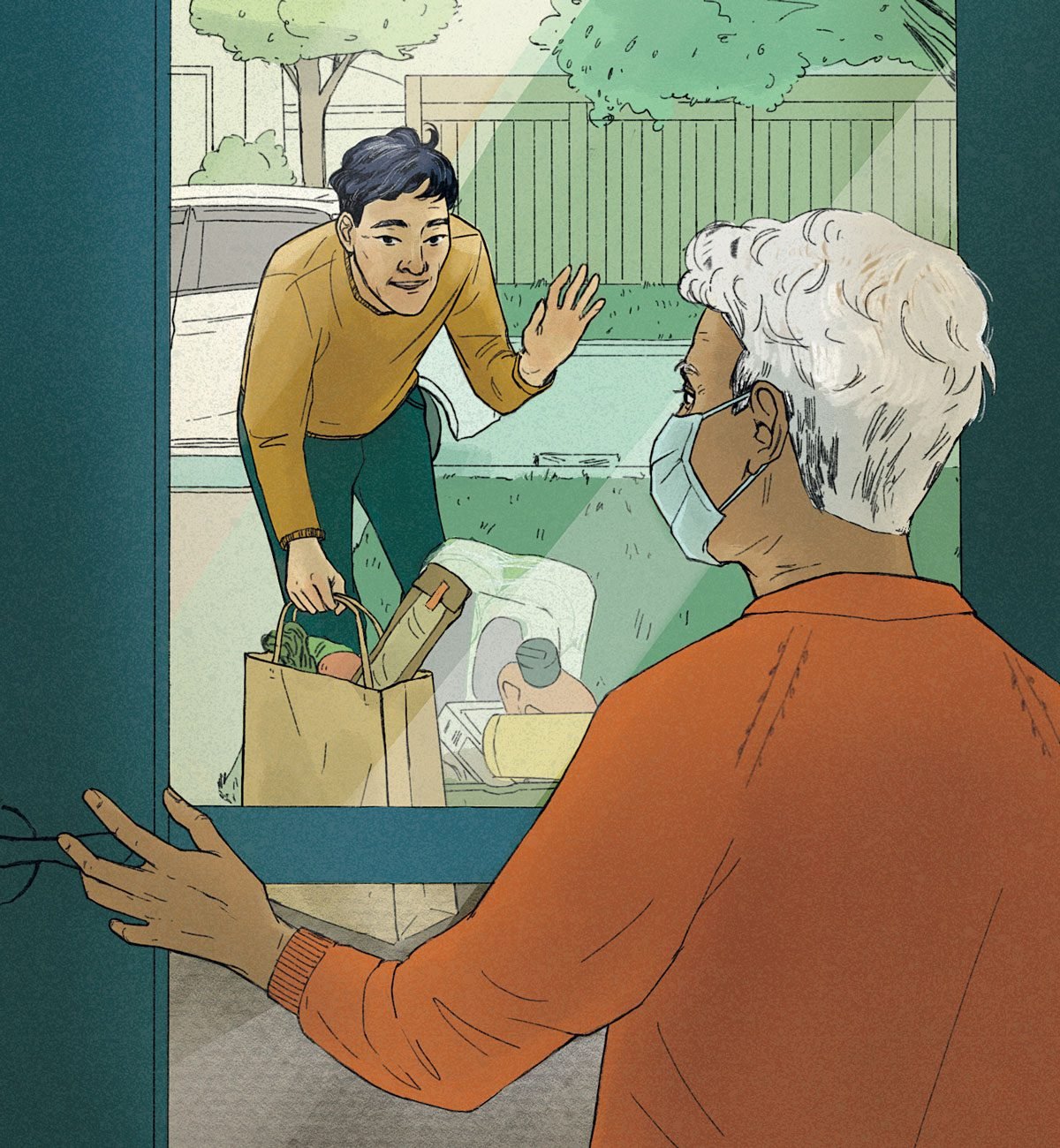
The benefits of being nice
Humans like to pretend we are unique in truly caring for others. In reality, altruism and helping behaviours are far from rare in the animal kingdom. Just Google “animals saving other animals” and your screen will be flooded with videos of hippos rescuing drowning baby zebras and baboons chasing off leopards to save antelopes. If that’s not enough to convince you, rest assured that proper scientific studies also find genuine altruism in many animal species, from capuchin monkeys and chimpanzees to ravens and rooks.
Yet there are some evolutionary reasons why human altruism should differ from that of other species. One popular hypothesis states that caring for others developed from parenting behaviours. Since human babies are born particularly vulnerable (thank you, big brains), they require unusually high amounts of care—just ask any new parent who is lacking good sleep. To ensure that mothers and fathers won’t abandon these needy creatures, nature equipped us with two systems: one reward-inducing and the other stress-reducing.
Snug in the middle of our brain is a grape-sized area known as the insula, which is activated by such things as helping others, donating money to charity and, yes, caring for kids. Additional reward-related brain areas, the septal area and ventral striatum—the very same ones that light up when you find a winning scratch-and-win card—also buzz with activity when you take care of others. In other words, parenthood and other forms of caregiving are wired to the brain’s reward system.
Evolution also linked caring with mechanisms that ease stress. For elderly human volunteers, taking care of infants reduces cortisol levels in the saliva (which could translate into such health benefits as a reduced risk of high blood pressure, type 2 diabetes and osteoporosis).
The upshot is good news. Whether we’re parents or not, everyday kindness can ultimately lower our stress, boost our health and help us live longer.
One way caregiving may inhibit stress is through dampening the activity of the amygdala, the brain’s centre for emotions, emotional behaviour and motivation, and disrupting its connections with the fight-or-flight response. When adults hear the whimpers of infants, the response of the amygdala is tempered, allowing them to care for little ones without burning out.
Down the road, this altruism-related turning down of the stress response has an impact on our immune systems and inflammation. People who frequently volunteer have lower levels of C-reactive protein—a marker of inflammation. If your blood is teeming with C-reactive protein, that’s a bad sign, suggesting you may be headed toward such health problems as cardiovascular disease.
Experiments confirm that it’s the act of volunteering, not some other characteristic of people who tend to sign up for unpaid work, that keeps inflammation at bay. At one high school in Western Canada, students were divided into two groups. The first group was to volunteer, helping kids in after-school programs. The second was wait-listed. When blood samples were compared, a clear image emerged: people who volunteered had significantly lower levels of an inflammatory marker called interleukin 6. Elevated levels of interleukin 6 can mean double the risk of dying within the next five years.
If you don’t have the ability to volunteer in person, monetary donations, informal caregiving and even simple, everyday acts of kindness work well for our health, too.
Research by Lara Aknin, an associate professor of psychology at Simon Fraser University in British Columbia, shows that although we believe we gain the most happiness from buying stuff for ourselves, in reality we end up better off if we lavish money on others.
Imagine you’ve found $20 on a deserted sidewalk. What would you do with it? In one experiment, Aknin and her colleagues handed volunteers either a $5 bill or a $20 bill, then instructed half of the participants to blow the windfall on themselves and the other half to spend the gift on someone else. Once the money had been spent and everyone’s moods had been carefully evaluated, Aknin discovered that those who used the money to please others ended up significantly happier.
A pleasant mood is not the only benefit we may derive from treating others. The gains can be as varied as better sleep, sharper hearing, stronger muscles and lower blood pressure. When seniors suffering from hypertension were handed $40 per week for three consecutive weeks to either spend on themselves or on someone else, those who donated saw their blood pressure drop as much as if they had picked up a healthier lifestyle or started new medication.
You can also boost your health by caring for your family. It may seem counterintuitive that, say, caring for an aging parent could make us physically better off, as caregiving often involves poor sleep, labour and psychological strain. However, several studies have shown that many caregivers actually live longer. In one such analysis, a study published in 2013 in the American Journal of Epidemiology, scientists carefully compared over 3,500 family caregivers with more than 3,500 people who didn’t nurse anyone and discovered that the former had 18 per cent lower mortality rates.
If you are a grandparent, and not too frail, family caregiving can take the form of babysitting your grandkids. Offering such help occasionally can lower mortality rates by as much as 37 per cent—more than regular exercise.
In January 2019 I decided to test whether I could boost my health through everyday acts of kindness, which I’d perform in my hometown—a small village in northwestern France. I contacted two scientists at King’s College London who study cortisol response—Carmine Pariante, a professor of biological psychiatry, and Naghmeh Nikkheslat, a post-doctoral researcher—and they generously agreed to help me out. We discussed the details of my experiment, and soon a package arrived in my mailbox. Inside were printouts to be filled out on each day and a stash of small plastic tubes called Salivettes. For seven days, I was to collect my saliva in the tubes, morning, noon and evening, and then ship them back to Pariante and Nikkheslat, who would measure my cortisol levels. On four of the saliva-collection days, I’d follow my regular routine. The remaining three would be my “intervention days,” where I’d add small acts of kindness.
I woke up on day 1 and reached for the Salivette prepared on my night table. I unscrewed the blue cap and slid a roll-shaped swab into my mouth. I repeated this three times a day throughout the week, dutifully noting my moods and everything that happened in a journal.
On the third day, it was time for my first kindness intervention. As I sat down at my desk planning fun things I could do for others, I felt my spirits lifting. The implementation phase was even more fun. I left a smiley-face sticky note on my neighbours’ car. I bought and delivered a small box of chocolates for the nice lady at our local library. At a grocery store, I opened the doors for an elderly woman. I didn’t know whether my cortisol response was healthier, but I certainly felt happier.
Over the next two days, I continued with random kindness. I bought sandwiches for a homeless family. I donated books. I baked cookies for my husband to share with his colleagues. And I felt really good.
When the experiment ended, I packaged up the Salivettes and mailed them back to London. About two weeks later, I received news from Nikkheslat: they had the results.
While on my regular days I produced on average 64 nmol/L of cortisol, on my acts of kindness days I produced just a little under 54 nmol/L, suggesting lower levels of stress. Pariante and Nikkheslat found that on my first day of random kindness, I woke up with quite elevated cortisol levels, which then dropped significantly by noon—by which time I’d already started my acts of kindness. The next two intervention days, I woke up with considerably lower cortisol levels.
Of course, the health-boosting effects don’t mean you can just skip your hypertension medications. In a perfect scenario, you’d still eat well, do 30 minutes of physical activity a day, and engage in kindness. But sometimes it’s easier to skip the gym and instead just do a few nice things for people.
For my part, I look for more opportunities to perform kind acts in everyday life. I’m not always as deliberate as I was during my experiment, but I’m trying. I certainly let more cars pull in ahead of me when I’m driving.
Unlike other healthy habits, philanthropy is contagious. By giving to others, you will not only live longer, but you may also end up spending the extra years in a slightly better, kinder world.
Next, check out these tips that will help you live to 100!
Excerpted from Growing Young: How Friendship, Optimism, and Kindness Can Help You Live to 100 by Marta Zaraska. Copyright © 2020 Marta Zaraska. Published by Appetite by Random House®, a division of Penguin Random House Canada Limited. Reproduced by arrangement with the Publisher. All rights reserved.
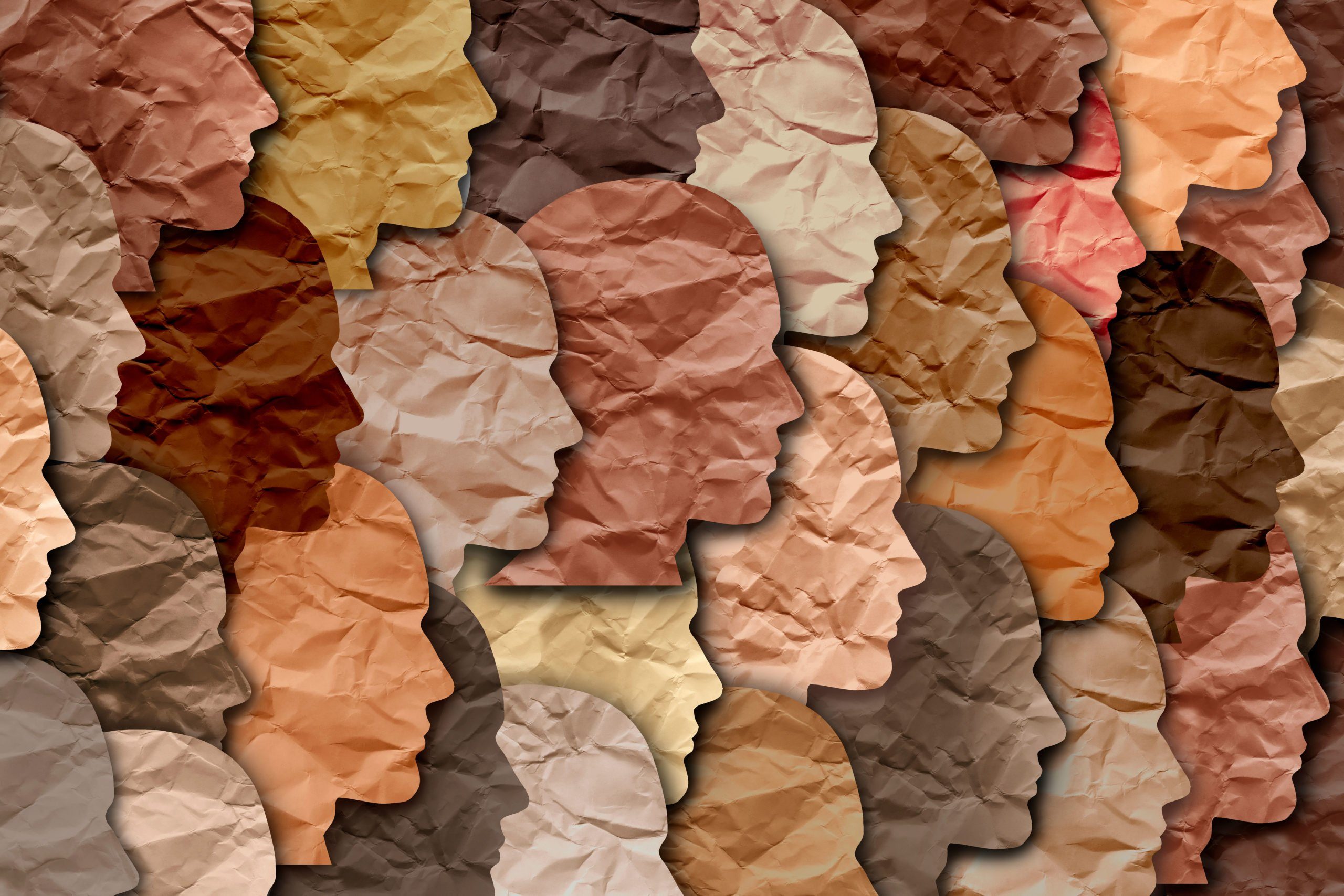
Am I your only Black friend? Before you answer, let me add to the question. I don’t mean George from accounting who knows all the ins and outs of last week’s game. I don’t mean the security guard you wave to every morning on your way into work. I mean, do you call them to have lunch? To complain about your kids, your spouse, your boss? Have they been personally and specifically invited to your home?
The problem with well-meaning
I have a lot of white friends, and during the past week a number have reached out to me to see how I am doing. I am conflicted about this. On the one hand, I deeply appreciate that they are thinking of me and my children and how we are reacting in this debilitating time of social unrest. But to be honest, what I would like them to do is reach out to their other friends. Specifically, their white friends. Because right now I need white people to speak to one another. I am wrestling with my own issues at this time; I cannot carry the burden of yours.
How do I feel? Tired. Worried. Anxious. You know what I am not? Surprised. None of my Black friends are surprised. The possibility of this type of violence is not surprising to us. We may choose not to speak to you about it because you haven’t ever asked.
Well-meaning people say a lot of well-meaning things. “I can’t imagine how you feel” is right there at the top of the list. Have you tried? I’m asking because I know I don’t need to be Jewish to be distraught and outraged about anti-Semitism. And I know I don’t need to be gay to be disgusted and terrified by homophobia. So why is it so difficult for you to even imagine what it feels like to be Black?
Why I want you to see colour
And then there is “I don’t see colour.” Don’t you? If there are “too many” Black people at an event, in a room, in your town or your school, do you notice? Does it make you feel uncomfortable, even just a little bit? You see colour. Do you give more credibility to information coming from white colleagues than from your Black co-workers? You see colour. You do not have to wield a baton on a bridge to be a person who has racist thoughts.
Most of us at one point or another will make sweeping assumptions based on race. These range from the mild (all Black people can dance, play basketball, etc.) to the more pernicious (Black men are dangerous sexual predators, Black bodies can withstand greater levels of violence than white bodies). Having racist thoughts does not make you a racist, but failing to question your racially-based assumptions does.
When you say I don’t see colour, you are not doing me a favour. It’s as if you are telling me my brown skin is something you have to work to look past, to excuse even, in order to see my humanity. I want you to see my colour as much as I want you to notice anything else about me. So please, go ahead and see my colour. See me.
Next, check out these powerful quotes on racism from history’s most inspiring activists.
Dawn Porter is a documentary filmmaker. Watch the trailer for her newest film, John Lewis: Good Trouble.
Reader’s Digest Canada: We hear so much about opioid misuse and abuse, but is there a safe way to use these drugs?
Daniel Kalla: Absolutely. We give fentanyl to people in the hospital for things like draining an abscess or if they’ve had their gallbladder out and need to get through the operative pain. It’s safe when controlled. The problem is that doctors were prescribing opioids too liberally as a way to manage long-term pain. After a while, there was no pain—just addiction. Then, when people are no longer able to get what they need legally, or they aren’t getting the same high and require something stronger, they transition to street drugs.
When did opioid abuse in Canada go from a problem to a crisis?
About six years ago, we started to see the overdose levels spike. At St. Paul’s Hospital in Vancouver, arguably the epicentre of the opioid crisis in this country, I went from seeing three to four overdoses a day to 10 to 20.
The game changer was fentanyl, which is 50 to 100 times stronger than morphine, and the street versions can be 100 times more potent than that. In the ER, we’ve provided primary care to “familiar faces”—long-term opioid users—who would come in on a semi-regular basis. But when fentanyl arrived, a lot of them disappeared.
You also write novels on the side. How does that fit with your day job?
Writing is a release for me, a way to vent some frustrations with my work. My latest—The Last High—is about the opioid crisis, and I’ve had a front row seat to this tragedy for 20 years. It’s hit me hard both personally and professionally, so I was very inspired to tackle it.
A lot of people think, “Opioid abuse could never happen to me.” Is that part of the problem?
Absolutely. People have their own vision of what someone addicted to opioids looks like, and it’s not usually them or the people in their family. This is dangerous because it diminishes empathy and can lead to a sense of imperviousness that could make you more susceptible.
Is this addressed in your book?
Yes, it’s one of the reasons I chose an emergency doctor who specializes in toxicology as the protagonist. Her backstory is that she and her partner used hospital-based fentanyl—and he died in her arms.
Although there are risk factors that can make people more susceptible to opioid abuse—genetics, poverty, mental health issues—it’s important to understand that nobody is immune.
Outside of your experience in the ER, what other research did you do for your book?
A friend of mine, who is an undercover cop, gave me a crash course in the underground world that fuels the opioid crisis. He described the cavalier attitude among dealers and criminal organizations. Because they have no regard for life, supply is not something we’re ever going to be able to fix.
What can we do? Do you support harm reduction strategies?
One hundred percent. We can’t treat a medical condition with a criminal solution. Very few people who abuse opioids would choose to be in the position they’re in. We need to focus on decreasing demand by managing the people living with addiction, including legal access to the drugs they need and government-subsidized access to detox and rehab. None of that involves the police.
Next, find out if your supplements are doing more harm than good.
